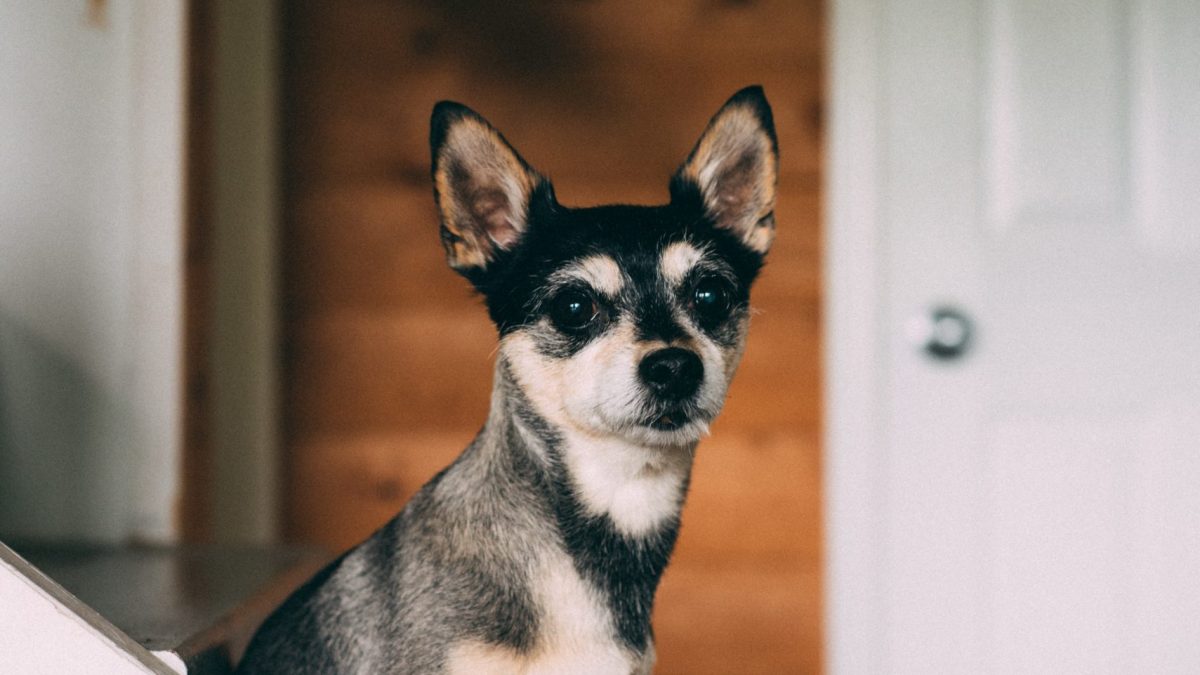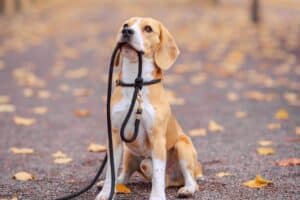Canine hip dysplasia is a degenerative and painful condition. Staying informed and recognizing the signs of canine hip dysplasia can help your dear doggo age gracefully and stay comfortable. Whether you just adopted a clumsy large breed puppy or your four-legged best friend is getting older, here’s what you need to know about canine hip dysplasia.
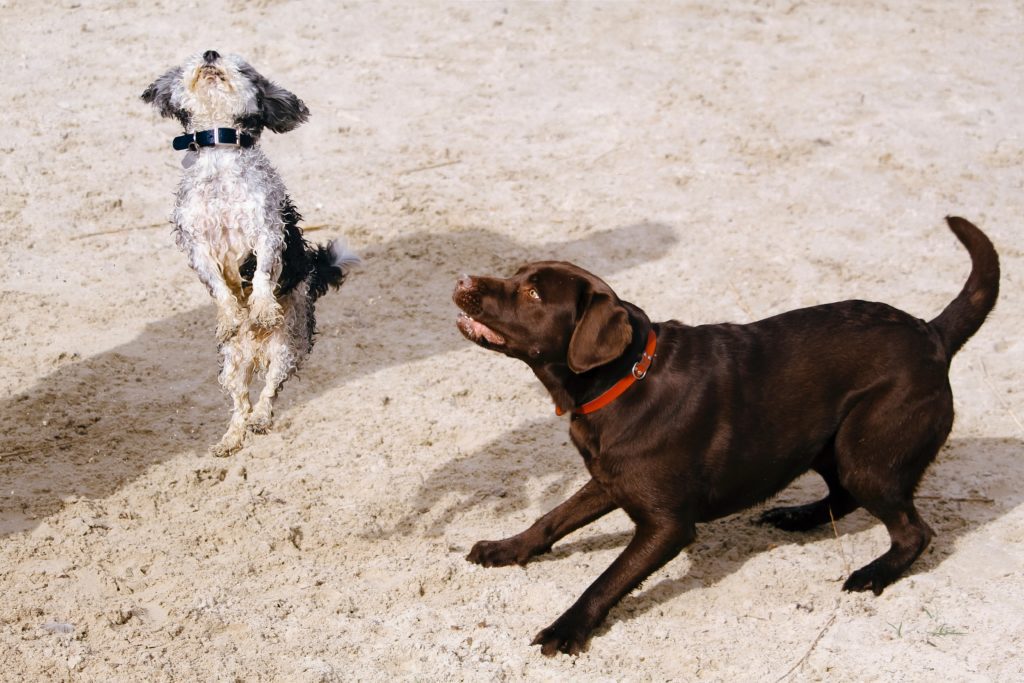
Larger dogs are prone to hip dysplasia, but all breeds can develop the condition.
What is Canine Hip Dysplasia?
A puppy’s hip bones normally grow at the same rate. The hip is a ball and socket joint and when a puppy has canine hip dysplasia, its pelvis and thigh bone don’t grow at the same rate.
This means the ball of the thigh bone doesn’t fit into the socket and the joint is unstable. The floating ball can rub and deform the socket. Over time, their bones will grind against each other, causing pain and deterioration. Eventually, a dog’s joint develops scar tissue and bone spurs.
Here are some large breeds prone to hip dysplasia:
- German Shepards
- Saint Bernards
- Great Danes
- Irish wolfhounds
- Pit bulls
- Rottweilers
- Labrador retrievers
Since canine hip dysplasia is a genetic condition, small breed puppers can also suffer from it. Even though a dog parent can’t prevent the condition, they can treat and manage their dog’s pain.
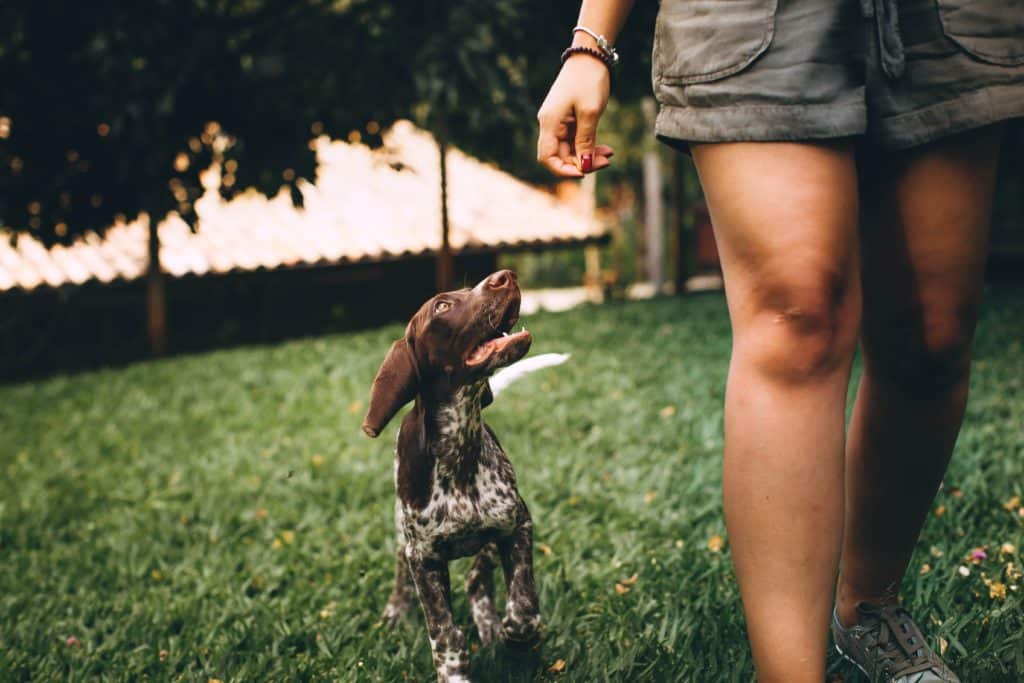
Canine hip dysplasia is a genetic condition.
What Causes Canine Hip Dysplasia?
Dogs inherit the condition and certain breeds are prone to canine hip dysplasia. Larger breeds’ frame and activity levels can lead to more stress on their joints. Strenuous activities like jumping, running for long periods, and a fast growth rate contribute to large breeds having canine hip dysplasia.
Small breeds like pugs, dachshunds, and bulldogs have a history of selective breeding that has added to the likelihood of having canine hip dysplasia. Carrying a few extra pounds adds more wear to their unstable joints.
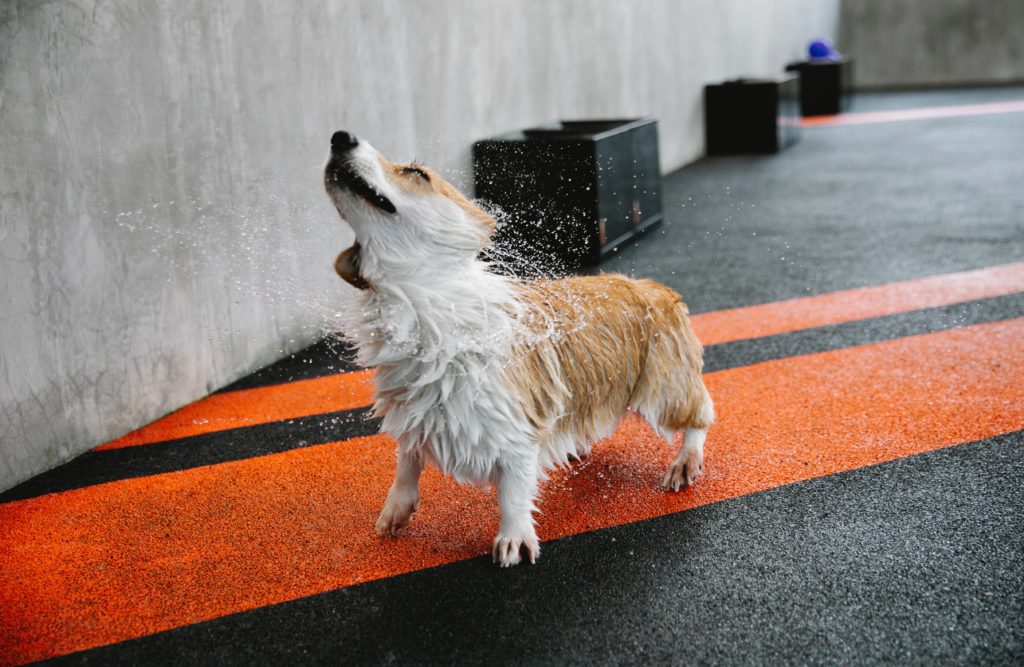
Selective breeding causes genetic canine hip dysplasia in small dog breeds.
As a puppy is growing, proper nutrition and exercise are important to prevent developing hip dysplasia. Some specially made foods for large breeds slow their rapid and uneven bone growth.
Allowing a puppy to jump from a very high couch or not getting enough time to stretch and use their muscles can increase their chances of canine hip dysplasia. Injury in their younger years, neutering too early, and overfeeding can increase the risk. Keep your furry friend in good shape, but be aware of overworking your dog’s joints with repetitive, high-stress movement.
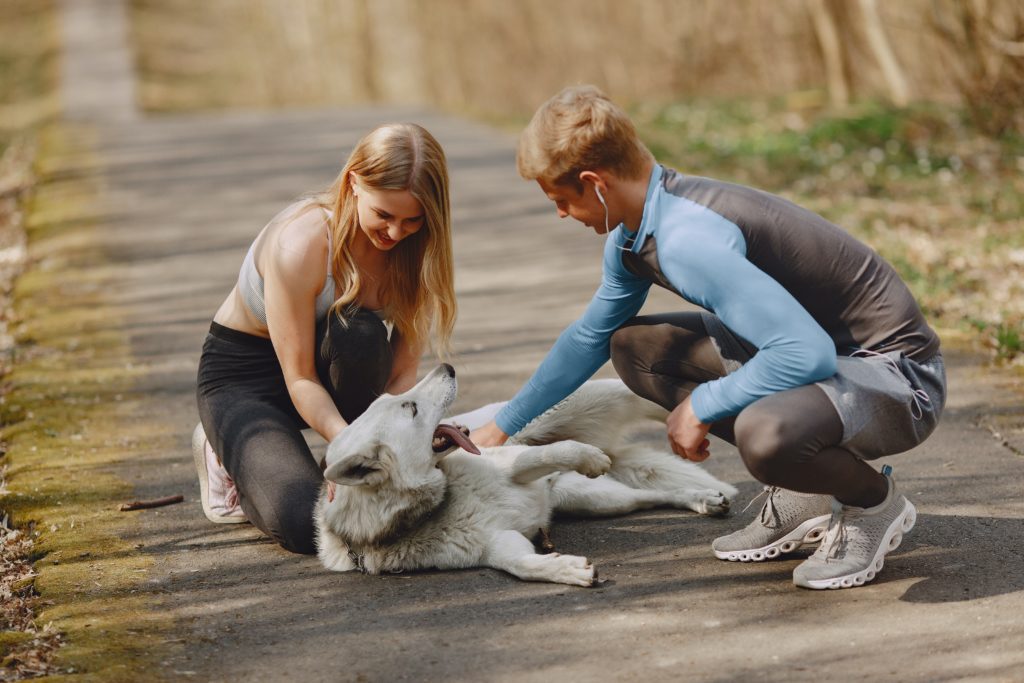
Large athletic dogs can develop hip dysplasia from intense stress on their joints.
What are the Symptoms of Hip Dysplasia?
Dogs are pros at masking their pain, and it’s tricky to spot the first signs of canine hip dysplasia. Although dogs can show signs as early as four months, most dog parents won’t see signs until after their dog turns two years old or they begin favoring their back legs.
Keep an eye out for these signs:
- Stiffness, especially from a laying down or sitting position to standing
- Loss of hip muscles
- Larger upper body (compensating for weak hip muscles)
- Hesitant to jump or climb stairs
- Less active
- “bunny hopping” when running (using both hind legs at the same time)
- Pain and reluctance to touch near their hips
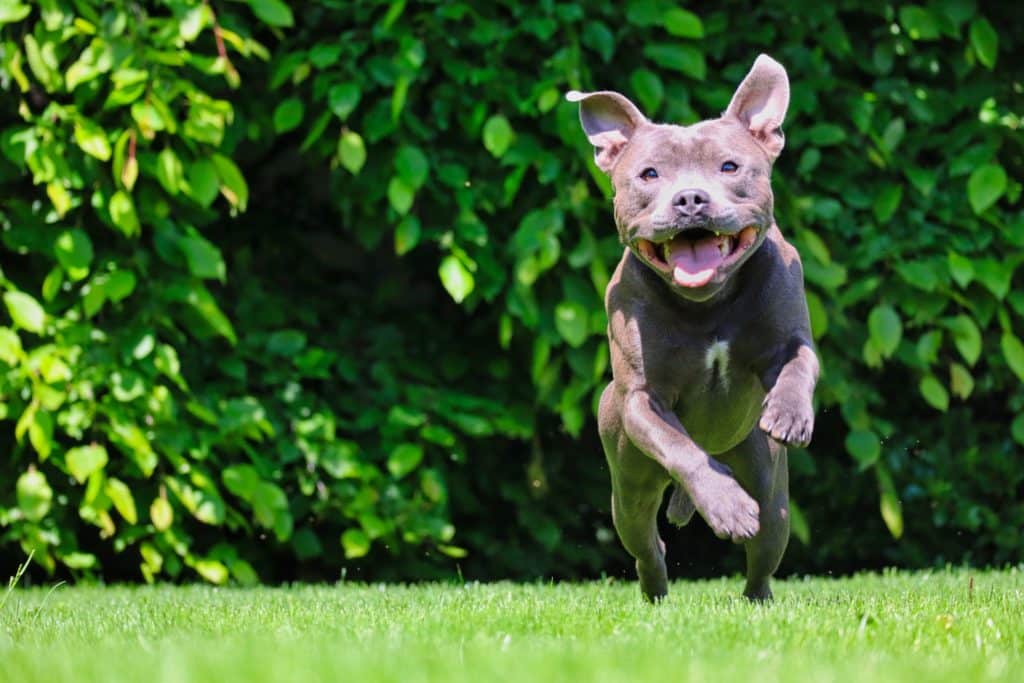
“Bunny hopping” while running is a sign of canine hip dysplasia.
Symptoms might be different or more intense depending on how long your pup is untreated. When left untreated, canine hip dysplasia can advance to degenerative joint disease or osteoarthritis. If your pup is a breed prone to this condition, have them checked for hip dysplasia during their annual vet appointments.
Diagnosis and Treatment
Your vet will diagnose your dog with a physical exam to check for canine hip dysplasia. By rotating your pup’s leg, they can test the range of motion and feel any instability. Your veterinarian may request information on any past injuries and health issues.
An x-ray may be required to see the degree of damage. Bloodwork may also be necessary to determine the amount of inflammation your pupper is experiencing.
Depending on the stage of your dog’s hip dysplasia, there are many options before needing surgery. Your vet may recommend physical therapy and low-impact activities. Avoiding long jogs or intense hikes will help manage pain and continued wear on the joints.
Joint supplements and CBD treats are common suggestions for canine hip dysplasia. If your vet recommends including CBD in your dog’s health routine, our CBD-infused peanut butter is a perfect option. We have 3 strengths–150mg, 300mg, and 600mg–perfect for dogs big and small!
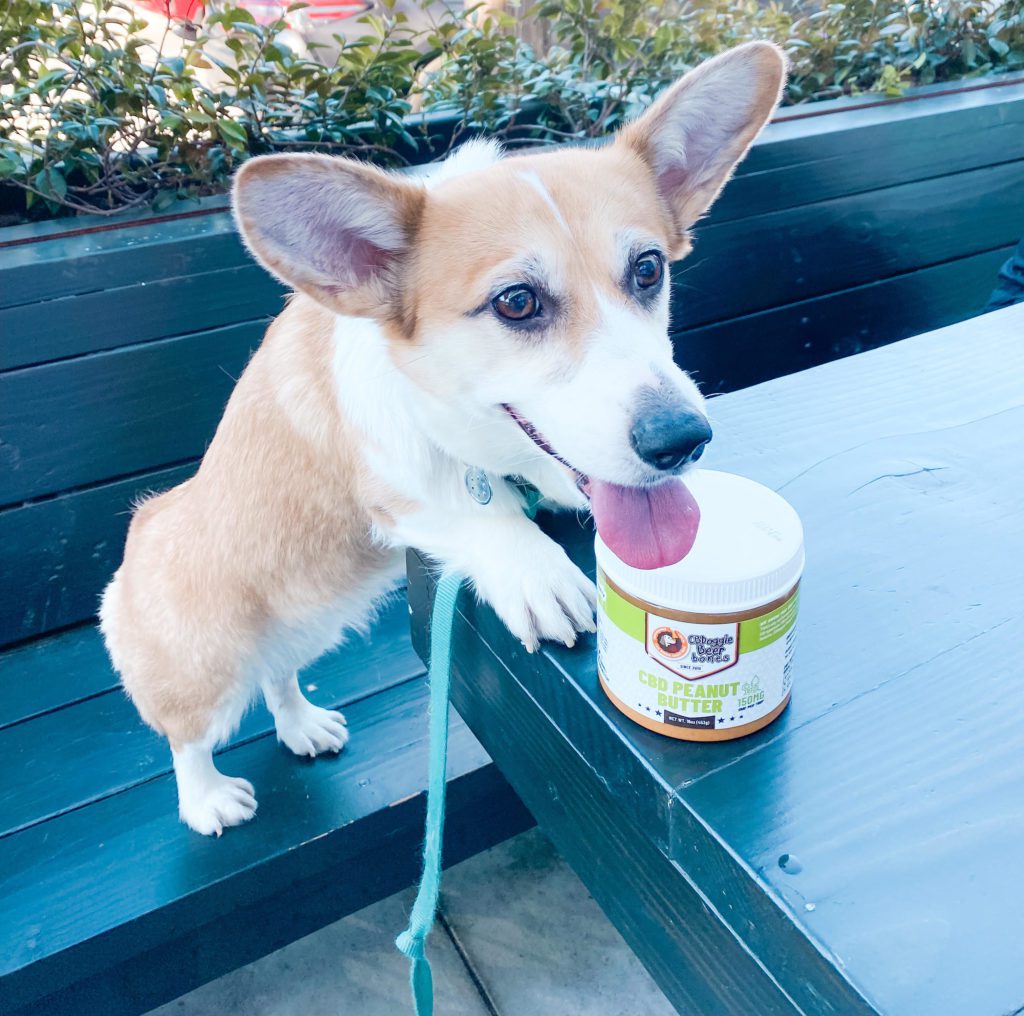
CBD treats and supplements for dogs can ease the pain of canine hip dysplasia.
Most joint supplements include glucosamine and chondroitin. Both are natural compounds that help with inflammation. Glucosamine is used to treat arthritis in humans and helps manage pain for dogs with osteoarthritis.
There are a few simple things you can do at home to manage canine hip dysplasia. Help your dog maintain a healthy weight. Restrict and monitor your dog if they enjoy high-intensity activities. Instead, consider activities like swimming or underwater treadmill walking.
Keep your dog warm during the colder months to avoid intense joint pain. Buying an orthopedic bed will relieve pressure points as your dog sleeps. Laying down rugs with thick non-slip pads will help your furry family member with traction on hardwood floors.
Massage and acupuncture are also options for pain relief. Use circular motions with your fingertips for a short 10-minute massage each day to help with stiffness. But watch for any discomfort while massaging your dog.

Dog parents can manage canine hip dysplasia with supplements and low-intensity exercise.
Canine Hip Dysplasia is Manageable!
Many dog parents cringe when they hear the term canine hip dysplasia, but when medical treatment is paired with pain management, your buddy can live a long, full life. Remember to talk to your vet about any concerns you have about canine hip dysplasia. You may have to trade your long jogs with your pup for short leisurely walks, but your furry companion can still live comfortably with a few lifestyle changes.
Need to add CBD to your dog’s new pain management plan? We’ve got you covered! When you bundle up, you save up to 40% when you buy a peanut butter bundle. Pair our CBD-infused peanut butter with any soft-baked or crunchy peanut butter treats.
Never let your pup miss a day without our snacks! Get free shipping on any orders over $40 and save an extra 10% when you sign up for our newsletter! Your dog’s favorite snack is just a click away!
Have you ever looked into Pet Insurance? Check out this resource of the top 9 rated pet insurance companies for 2022.


